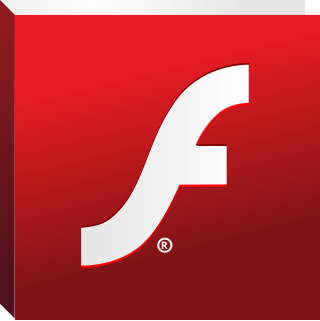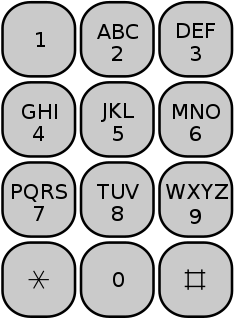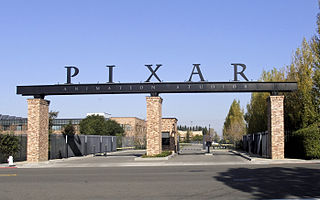
Binary Runtime Environment for Wireless is an application development platform created by Qualcomm, originally for code division multiple access (CDMA) mobile phones, featuring third-party applications such as mobile games. It is offered in some feature phones but not in smartphones. Developed in 1999, as a platform for wireless applications on CDMA-based mobile phones, it debuted in September 2001. As a software platform that can download and run small programs for playing games, sending messages, and sharing photos, the main advantage of Brew MP is that the application developers can easily port their applications among all Brew MP devices by providing a standardized set of application programming interfaces. Software for Brew MP enabled handsets can be developed in C or C++ using the freely downloadable Brew MP software development kit (SDK). The Brew runtime library is part of the wireless device on-chip firmware or operating system to allow programmers to develop applications without needing to code for system interface or understand wireless applications. Brew is described as a pseudo operating system, but not a true mobile operating system. Brew is not a virtual machine such as Java ME, but runs native code.
Over-the-Air programming (OTA) refers to various methods of distributing new software, configuration settings, and even updating encryption keys to devices like cellphones, set-top boxes or secure voice communication equipment. One important feature of OTA is that one central location can send an update to all the users, who are unable to refuse, defeat, or alter that update, and that the update applies immediately to everyone on the channel. A user could "refuse" OTA but the "channel manager" could also "kick them off" the channel automatically.
Boost Mobile is a wireless telecommunications brand used by two independent companies in Australia and the United States. Boost Mobile was originally founded in 2000 by Peter Adderton in Australia. In Australia, it is operated by Boost Tel Pty Limited using the Telstra wireless network, where as in the United States it's operated by Boost Worldwide, Inc, a Sprint Corporation subsidiary. Boost Mobile uses Sprint Corporation’s network to provide wireless service to its consumers in USA.

The Motorola Razr was a series of mobile phones by Motorola, part of the 4LTR line. The V3 was the first phone released in the series and was introduced in July 2004 and released in the market in the third quarter of 2004. The V3 model was followed soon thereafter by the much improved V3i with a collaboration with Apple Inc. for iTunes to be built-in.
TracFone Wireless, Inc. is a prepaid mobile virtual network operator in the United States, Puerto Rico, and the US Virgin Islands. TracFone Wireless is a subsidiary of Mexico's largest telecommunications company América Móvil, and offers products and services under several other brands. It operates as a mobile virtual network operator (MVNO), holding agreements with the United States' largest wireless network operators to provide service using their networks, including Verizon Wireless, AT&T Mobility, T-Mobile US, Sprint Corporation, and U.S. Cellular. TracFone Wireless had 25.668 million subscribers in 2015.

Adobe Flash Lite is a lightweight version of Adobe Flash Player, a software application published by Adobe Systems for viewing Flash content. Flash Lite operates on devices that Flash Player cannot, such as mobile phones and other portable electronic devices like Wii, Chumby and Iriver.

Alltel Wireless was a wireless service provider, primarily based in the United States. Before acquisitions by Verizon Wireless and AT&T, it served 34 states and had approximately 13 million subscribers. As a regulatory condition of the acquisition by Verizon, a small portion of Alltel was spun off and continued to operate under the same name in six states, mostly in rural areas. Following the merger, Alltel remained the ninth largest wireless telecommunications company in the United States, with approximately 800,000 customers. On January 22, 2013, AT&T announced they were acquiring what remained of Alltel from Atlantic Tele-Network for $780 million in cash.

Tethering, or phone-as-modem (PAM), is the sharing of a mobile device's Internet connection with other connected computers. Connection of a mobile device with other devices can be done over wireless LAN (Wi-Fi), over Bluetooth or by physical connection using a cable, for example through USB.
The term Subsidy Password is used by Motorola and other handset manufacturers to refer to the 8-digit unlock code necessary to remove the operator lock from cell phones. This code is randomly assigned to individual cell phones by the OEM on request of the mobile service operator and prevents the use of a particular phone on a cellular network other than that to which the phone was originally sold.
Kyocera Communications, Inc. is an American manufacturer of mobile phones for wireless service providers in the United States and Canada. Kyocera Communications, Inc. is a wholly owned subsidiary of Kyocera Corporation, which also manufactures mobile phones for the Japanese wireless market under various brands.
Disney Mobile is a division of Disney Interactive, a subsidiary of The Walt Disney Company, that designs mobile apps, content and services.

The HTC Titan is an EVDO Rev. A Windows Mobile 6.1 Pocket PC phone manufactured by High Tech Computer Corporation of Taiwan. It is the successor to the HTC Apache upon which it improves by adding more ROM, GPS, EVDO Rev. A, additional hard keys, a scroll-wheel, spring-loaded keyboard, and a higher resolution camera. The Windows Mobile 6.1 operating system includes Office Mobile along with HTML email through Microsoft Outlook Mobile. Windows Media Player is included, allowing the Titan to act as a digital audio and digital movie player.

The Samsung SCH-u470, or Juke and Verizon Wireless Juke, is a mobile phone offered exclusively by Verizon Wireless. It was announced on 2 October 2007, and released that same year on Q4 in three colors: red, teal, and navy (blue). The phone is a music player when closed, and can be swiveled for use of the mobile phone. It also has a VGA-resolution camera with a special "night shot" mode for taking photos in low-light conditions.
MobiTV, Inc. is a provider of live and on-demand video delivery solutions, headquartered in Emeryville, CA. MobiTV is a privately held, venture-backed company, and was founded in 1999 by Paul Scanlan, Phillip Alvelda, and Jeff Annison. Charlie Nooney joined the company as CEO and Chairman on October 15, 2007.

Verizon Communications Inc. is an American multinational telecommunications conglomerate and a corporate component of the Dow Jones Industrial Average. The company is based at 1095 Avenue of the Americas in Midtown Manhattan, New York City, but is incorporated in Delaware.
Novarra is a mobile internet software company founded in 2000 and based in Itasca, Illinois, USA. It creates web-based services such as web internet access, portals, videos, widgets and advertising for mobile devices. Novarra provides access to the internet and other services through wireless handsets, PDAs and laptops and sells directly to operators, mobile handset manufacturers and internet brand companies. Nokia acquired Novarra in 2010. BMW acquired Novarra in 2014.
Telenav, Inc. is a wireless location-based services corporation that provides services including Global Positioning System (GPS) satellite navigation, local search, automotive navigation solutions, mobile advertising, enterprise mobility and workflow automation. The company’s headquarters are located in Santa Clara, California in the United States with additional offices in the U.S., Germany, Japan, Romania, China, and Brazil.

Fox Sports Go (FSGO) is the main over-the-top service of Fox Sports. It provides streams of the Fox Sports 1, Fox Sports 2, Fox Soccer Plus, Fox Deportes, and Fox College Sports cable channels, and selected events airing on the Fox television network and the Fox Sports regional networks. The service also offers exclusive live and archived digital content from the Big East Conference, National Lacrosse League, and the UEFA Champions League.

go90 was an American over-the-top video service and mobile app owned and operated by Verizon Media. The service was positioned as a mobile-oriented "social entertainment platform" targeted primarily towards millennials, featuring a mixture of new and acquired content from various providers. The service was available exclusively within the United States, although as of March 2018 some of its content became available internationally via Tumblr.


















